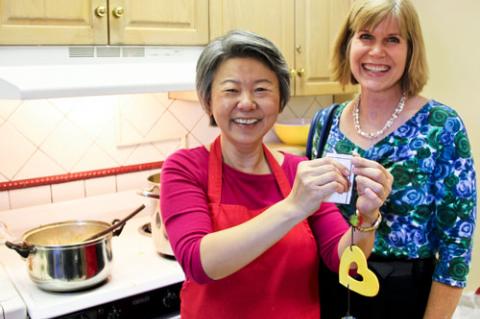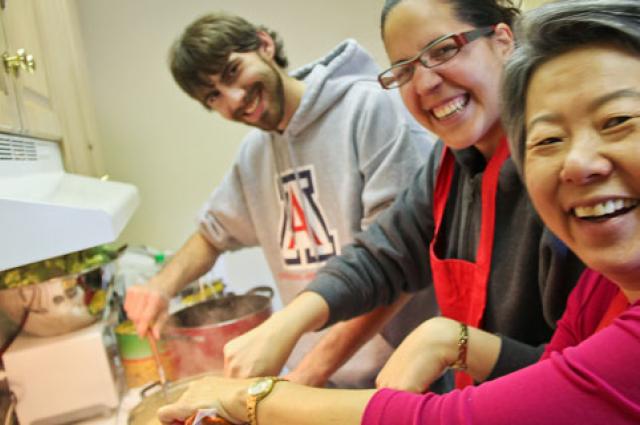UA Honors Supapan Seraphin With Distinguished Outreach Award
Since joining UA Engineering’s department of materials science and engineering nearly a quarter-century ago, Supapan Seraphin has been a tireless ambassador for science and engineering education -- especially for women and minorities who imagined such a career to be out of reach.

Seraphin has received the 2014 University of Arizona Distinguished Outreach Faculty Award, given to faculty with “a significant record of conducting outreach policy, practices, and implementation at the University of Arizona; a record of distinguished creative scholarship; and the sustained application of scholarship in non-formal classrooms.” As a principal or co-principal investigator on National Science Foundation grants totaling nearly $10 million, she has guided countless people of all ages and backgrounds toward successful, rewarding careers in science and engineering.
Seraphin joined MSE in 1990 as its first female faculty member and director of the Electron Microscope Facilities for Materials Research, now part of the University Spectroscopy and Imaging Facilities. Her research centers on processing and characterizing materials at the nano-scale, and she holds joint appointments in the College of Optical Sciences and the College of Agriculture and Life Sciences’ department of agricultural and biosystems engineering.
She has spearheaded dozens of innovative and influential science education programs, including one in which hundreds of first-year UA students and pre-college students visit the UA electron microscopy lab, where they can view, process and analyze data from the microscopes and other devices without getting their hands on the delicate and expensive – and easily damaged -- instrumentation in the lab.
“I love when first-year students in [College of Engineering introductory course] Engineering 102 say, ‘I know you! I remember you from my high school field trip!’” Seraphin said. “One of my highest rewards is when students and K-12 teachers tell me I have provided them with a life-changing experience and had a positive impact on their career.”
Many she touches never set foot on the UA campus. In a program funded by the Arizona Board of Regents, students in Arizona have gained access to the UA electron microscopes remotely, interacting with the instrument operator in real time from personal computers.
Seraphin actively promotes science education to K-12 students and teachers around the U.S. -- including on Indian lands -- and abroad, in such countries as Thailand, Kenya, Peru and Brazil. She is also involved in sharing science and engineering with the local community, as part of “Revealing the Invisible Universe -- from Nanoscope to Telescope,” a collaboration between the UA Flandrau Science Center, Arizona State Museum, and National Optical and Astronomical Observatory that involves undergraduates and teachers conducting programs at science centers and museums to explain the value of UA research to the public.
Seraphin’s other honors for her outreach have included the College of Engineering Award for Excellence at the Student Interface; the da Vinci Fellow Award; the University Women in Science and Engineering Diversity Inclusiveness Award; and the Ben’s Bell Award. The last, given to Tucson residents promoting kindness in the community, was inspired by Seraphin’s famous weekly homemade Thai lunches for first-year students in UA residence halls, supported by funding from the Faculty Fellow program.
Top picture: Professor Supapan Seraphin, right, and some of her students have some fun in the kitchen preparing vast quantities of Thai curry for hungry students. (Pete Brown/UA Engineering)


